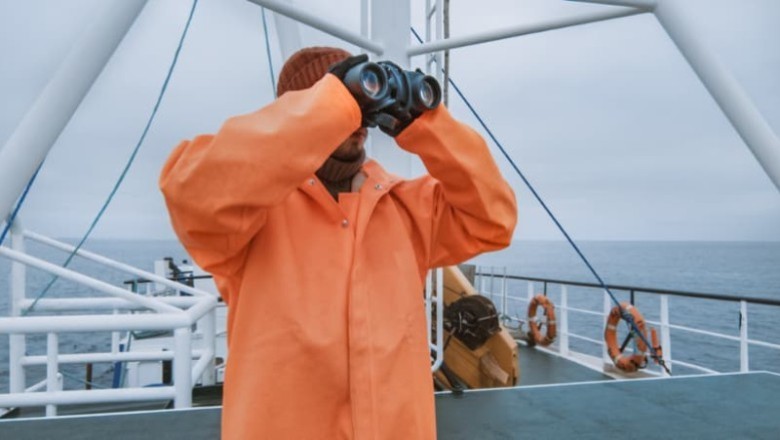
Polar bear tries to get attention from fishing boat. When the crew notices it, they lower a rescue boat into the water
Couldn't let it drown
The crew carefully weighed the risks before lowering the rescue boat into the water, convinced that the height of the boat above the water would deter any attempts by the polar bear to come on board. Their confidence was based on their understanding of the animal's capabilities, but the unpredictable nature of wild animals hovered as an unspoken warning over their plans. However, the crew's considerations still remained an unspoken reservation about the unpredictable nature of wild animals.
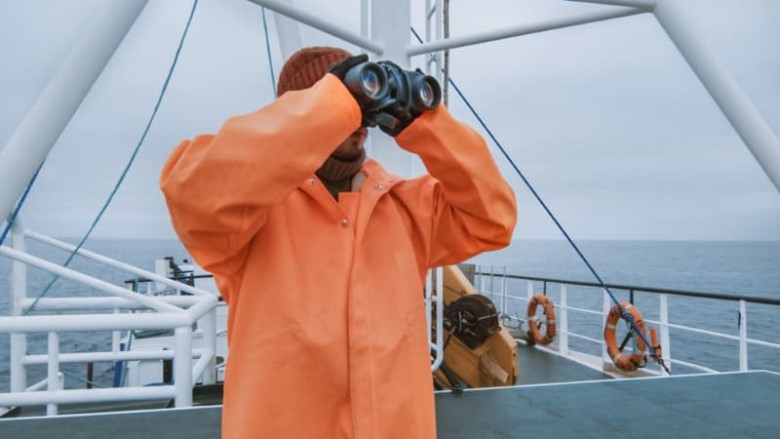
The realization that the polar bear may not have a nearby ice floe to retreat to alleviated some of the crew's immediate concerns regarding the safety of the animal, but a residual nervousness remained. They understood the gravity of the situation: it was not an option to leave the bear to fend for itself in the open water. This sense of responsibility towards the creature underscored their determination to find a solution, despite the uncertainty shrouding their next steps.
Polar bear climbed on board
As the rescue boat touched the icy water, the silence was interrupted by the bear's gentle growl, a prelude to its unexpected agility. With powerful strokes, it catapulted itself onto the rescue boat, its claws effortlessly gripping the edge. This moment shook the initial confidence of the crew and served as a clear reminder of the adaptability and strength of the polar bear.

A lighthearted moment broke the tension when Richard commented on the durability of their improvised raft, eliciting laughter from his crew members. This brief interruption of humor amidst the seriousness of their situation served as a reminder of the camaraderie of the crew and their ability to find levity even in the most unusual circumstances.
What could be wrong?
Standing on its hind legs, the bear fixed its gaze on Captain Reynolds and his crew, letting out a louder roar that echoed through the cold air. This display of dominance and perhaps curiosity positioned the animal not only as a creature of the wild but as an impressive presence demanding recognition, its roar an echo of the untamed spirit of the Arctic wilderness.

Captain Reynolds, his expression a mix of confusion and concern, posed the question that was on everyone's mind as they watched the polar bear aboard their rescue boat. "What is he doing?" he asked, only to be greeted by silence from his crew, equally fascinated and puzzled by the bear's actions. This moment of collective wonder highlighted the shared fascination and concern of the crew for the well-being of the bear.
Stopping the ship
Despite the initial roaring, the vocalizations of the polar bear became less frequent, although its restlessness increased as the rescue boat continued its journey westward. The bear's changing behavior, from vocal protests to increasing restlessness, hinted at discomfort or perhaps a deeper connection to the direction they were moving away from, adding layers of mystery to the bear's actions.

At Captain Reynolds' command, the Amberjack came to a stop, the engines fell silent as all eyes remained on the bear. What happened next surprised everyone, as the bear exhibited behavior none of them had anticipated. This unexpected turn deepened the mystery surrounding the animal and drew the crew and the captain into a puzzle that seemed to become more complex with each passing moment.
Polar Bear Jumped Back In
In a surprising turn of events that baffled the crew, the bear plunged back into the icy waters, retracing the path they had come from. The crew had believed they were helping the bear by bringing it aboard, but its decision to leave hinted at unknown motivations or instincts that drove its actions, challenging the crew's perceptions of rescue and the unpredictable nature of the wilderness.

Perhaps the bear was seeking a brief respite from the exhausting effort of swimming, or maybe there was a deeper motive behind its actions. Captain Reynolds couldn't shake the feeling that something crucial was eluding him, a piece of the puzzle just out of reach. His vigilant observations of the bear reflected his deep desire to understand and support the creature, despite the ambiguity of its needs.
Very Strange Behavior
While the crew resumed their duties, Captain Reynolds remained fixated on the bear, anticipating its departure. Contrary to expectations, the bear halted its retreat and approached the ship once again. This recurring pattern of departure and return raised questions about the bear's intentions, blurring the lines between curiosity, desperation, and perhaps a search for companionship or assistance.
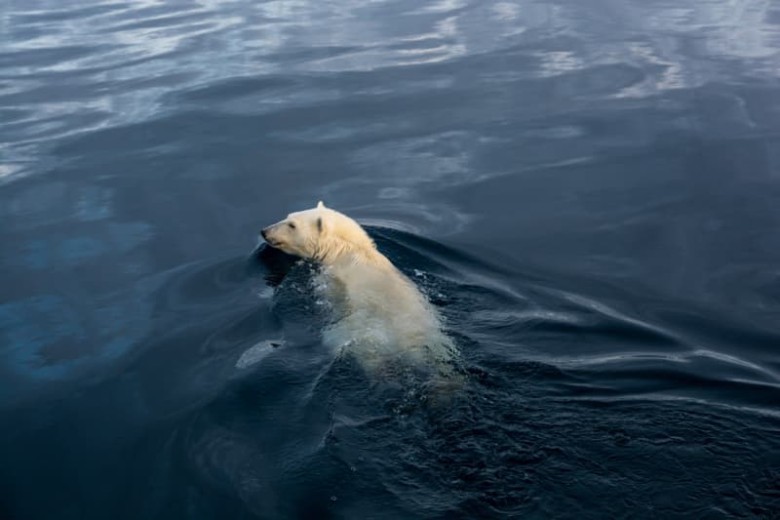
The bear's subsequent actions – turning back towards the ship and emitting another loud roar before returning to the raft – caught Reynolds' attention and curiosity. This sequence of behavior seemed to carry an underlying message, a communication that transcended species barriers. The captain's fascination grew with each roar, each glance back at the ship, driving him to seek understanding amidst the mystery.
Perhaps It Was Hungry?
For the second time, the polar bear reaffirmed its presence by boarding the raft and standing tall. This repeated action led to speculations about its needs – was it driven by hunger, did it see the crew as a potential food source, or was there another explanation for its persistent returns? The bear's behavior challenged simplistic interpretations and hinted at a complexity in its interactions with humans.

Considering the possibility of hunger, Captain Reynolds contemplated offering the bear some of their catch. They had already reached their fishing quota, and if the bear was truly in dire straits, sacrificing some fish seemed a small price to pay for potentially helping the distressed animal. This consideration stemmed from a place of empathy and reflected the captain's willingness to show kindness to a creature of the wild.
Giving It Some Fish
To address the possibility of hunger, Reynolds ventured into the storage area known as the "icebox," a depot for the crew's recent catch. His intent was clear: to offer food in hopes of appeasing the bear or understanding its motivations. This moment of interaction, bridging the gap between human and animal, was an experiment in communication and empathy.

With a large fish in hand, Captain Reynolds approached the side of the boat, convinced that the presence of the polar bear would be unmistakable, given the persistent noises it was making. His willingness to offer food was a testament to his compassion and hope that this gesture could provide some relief or establish a connection with the mysterious visitor.
It Did Not Eat It
Surprisingly, the bear showed little interest in the offered fish, a reaction that puzzled the crew. Its decision to sniff at the food but ignore it, followed by another rise and roar, hinted at desires or needs that went beyond mere hunger. This behavior forced a reassessment of the bear's actions and suggested a complexity in its motives that exceeded basic instincts of the animal kingdom.

The bear's indifference to the offered fish only deepened Captain Reynolds' frustration and confusion. His desire to help was palpable, but the bear's refusal to accept food left him wondering what it truly needed or wanted. This dilemma highlighted the captain's commitment to aiding the bear, while also emphasizing the complexities of interacting with wild animals, whose behaviors and needs often challenge human understanding.
What Did It Want?
The confrontation between Captain Reynolds and the polar bear took an unexpected turn as the bear began to interact with the ship in a new way, its paws exploring the side of the vessel. This shift in behavior, from passive observation to active engagement, signaled a change in dynamics and opened new avenues for interpreting the bear's actions and intentions.

Initially, the sound of the bear's paws scratching against the metal ship was just a slight annoyance. However, as these scratches escalated to more forceful banging, the crew's attention was abruptly drawn to the change in intensity. This progression from seemingly harmless behavior to a more aggressive action suggested a shift in the bear's communication attempts and lent urgency to the unfolding situation.
Calling One of His Crew Members
At Captain Reynolds' call, Steward, a trusted crew member, approached cautiously and observed the polar bear positioned just 12 feet below. The proximity of the wild animal filled the moment with tangible tension, a reminder of the unpredictable nature of their situation and the inherent risks of their encounter with the Arctic apex predator.

When Captain Reynolds called for help, Steward responded with a mix of readiness and apprehension, his attention divided between his captain's command and the imposing presence of the polar bear below. Steward's nervousness was palpable, a human reaction to the unpredictability of their circumstances, underscored by his hesitant engagement to fetch the radio, a task that suddenly seemed laden with significance.
He Needed a Radio
"Can you get me the radio, or stay here and keep an eye on the bear, report any changes," Reynolds instructed, his voice carrying a mix of urgency and command. This directive underscored the dual approach to managing the situation: close observation while seeking external expertise, a balance between immediate safety and long-term solution.
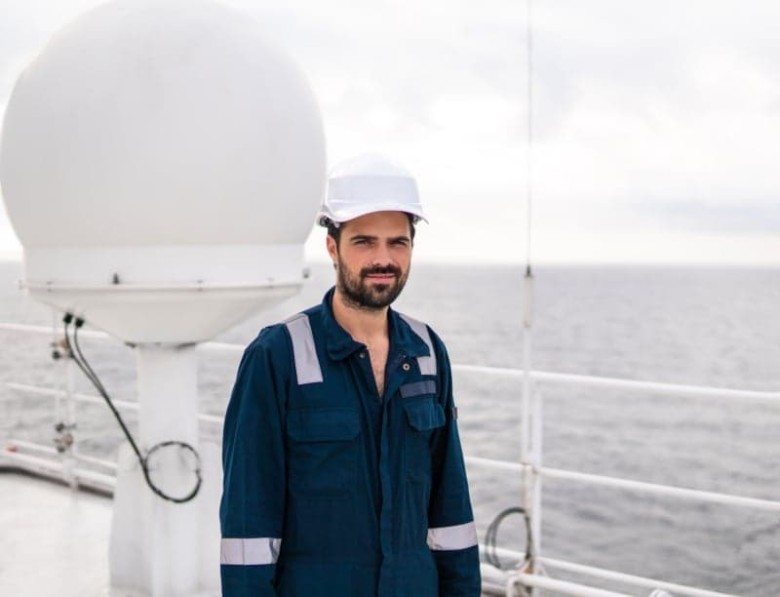
"We need to figure out what it wants," Captain Reynolds stated, eliciting a visible reaction from Steward, who paled at the thought of the impending task. The mention of fetching the radio set Steward in motion, his nervousness evident in his voice as he hurried to obey and understood the urgency to communicate with others who could shed light on the bear's peculiar behavior.
Wanted to Communicate with Experts
As Reynolds waited for Steward to return with the radio, his attention never wavered from the polar bear, which was now pacing restlessly around the raft. This vigil, a mix of fascination and concern, underscored the captain’s commitment to understanding and addressing the bear's presence, reflecting a deeply rooted responsibility for the safety of his crew and the welfare of the animal.

The captain was left contemplative as the bear struck the water with its paw, a gesture that seemed almost directive. The ambiguity of this behavior puzzled him, presenting a puzzle that challenged his experience and understanding of wildlife. This moment of contemplation revealed the depth of the mystery they were facing, a puzzle that transcended their maritime expertise.
He was Hopeful
Steward's prompt return with the radio brought a sense of relief and possibility. Procuring this crucial tool opened a channel for communication and assistance, a lifeline to the outside world that promised guidance to navigate the complex challenge they faced. The radio, symbolic of hope and connection, became a key element in their efforts to solve the polar bear's dilemma.

The radio, a crucial tool for reaching beyond the confines of their ship, held the potential for connection and aid. Captain Reynolds recognized its value not only for emergency communication but also as a means to seek insights from others who may have experienced similar situations. This acknowledgment of the broader maritime community and shared knowledge therein underscored the importance of the radio in navigating the challenges they faced.
Calling Other Ships
With the radio in hand, Captain Reynolds made contact, his voice a beacon of urgency as he sought expertise for the unique situation aboard the Amberjack. This call for help, broadcasted across the icy expanse, was a testament to the gravity of the encounter and the captain's determination to seek a peaceful and informed solution to the unexpected confrontation with the polar bear.

With a hopeful tone, Captain Reynolds concluded his transmission with a simple "Over," a signal of his readiness to receive guidance. His message, an appeal for expertise on the behavior of the polar bear, was a call into the vastness of the Arctic, hoping that someone listening could provide the understanding they were so desperately seeking.
Urgent Appeal Across the Waves
Far from the isolated encounter on the lifeboat, Reynolds' plea reverberated through the Arctic silence, reaching distant ears and marking the beginning of a collective effort to understand and address the bear's unusual behavior. This transmission, cutting through the vast frozen landscape, underscored the interconnectedness of human and animal life in the Arctic wilderness.
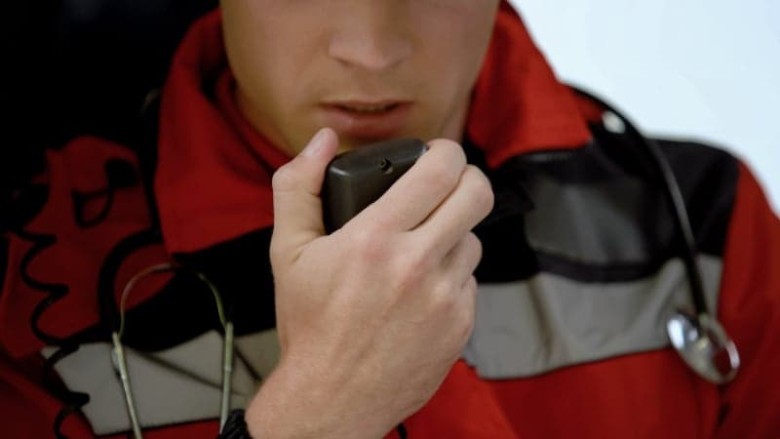
By transmitting their situation, Captain Reynolds articulated their need for help with a clarity that conveyed both concern and the urgency of their situation. "This is the Amberjack, requesting assistance due to a peculiar situation with a polar bear," he announced, his voice a beacon in the silence of the Arctic, seeking the knowledge that could unlock the mystery of the bear's actions.
A Quick Response
Onboard the Arctic Explorer, Dr. Lena Morgan and her team, experts in animal behavior and Arctic ecology, listened with great interest to Reynolds' message. The unusual nature of the polar bear's actions, as described, sparked curiosity and concern among the researchers. Their collective expertise, spanning a wide range of scientific disciplines, positioned them as ideal respondents to the captain's call for help.

Dr. Morgan, intrigued by the captain's message, pondered the implications of the bear's behavior. "This could be significant," she mused, signaling her team's readiness to tackle the mystery. Their collective expertise was drawn to the challenge, fueled by the possibility that the bear's unusual actions could offer new insights into polar bear behavior or environmental changes in the Arctic.
Curiosity and Concern
"An unusual behavior from a polar bear?" pondered Dr. Morgan, vocalizing her thoughts amidst the focused attention of her team. The ensuing team discussion, rich in hypotheses and considerations, reflected their deep engagement with the puzzle presented by Reynolds. This collaborative analysis, based on their diverse knowledge, underscored the complexity of wildlife behavior and the environmental factors that influence it.

A suggestion from one of the younger researchers that the bear's behavior could be a reaction to stress or an encounter with something unusual in its environment introduced a new perspective into their deliberations. This viewpoint shed light on the complexity of the situation, combining concern for the animal's welfare with a keen interest in understanding the broader ecological or psychological factors at play.
Preparing for a Meeting
Back on the Amberjack, preparations were underway for the expected arrival of Dr. Morgan and her team. Captain Reynolds instructed his crew to clear the deck and review safety protocols to ensure the ship was ready to facilitate the scientists' investigation. This proactive approach, balancing caution with the need to understand the polar bear's behavior, highlighted the crew's adaptability and commitment to responsibly resolve the situation.

The anticipation of meeting with specialists brought a mix of fear and excitement to the Amberjack's crew. Accustomed to the unpredictability of the sea, they now faced a situation that bridged the realms of maritime experience and scientific inquiry. This convergence of expertise promised a joint effort to decipher the bear's message, a venture into uncharted waters in more ways than one.
A Tense Wait
There was a palpable surge of energy on the deck of the Amberjack as the crew prepared for a meeting that would merge the worlds of seafaring and science in search of understanding. Among the crew members, there were lively speculations, each trying to piece together the reasons behind the polar bear's strange escapades. Questions hung in the air, unanswered but full of discovery potential.

Captain Reynolds, standing steadfast at the helm, embodied a beacon of leadership amidst a sea of uncertainty. His eyes were fixed on the approaching Arctic Explorer, whose silhouette stood out against the backdrop of the endless white horizon. This moment was more than just a meeting; it was the convergence of hope and curiosity, a collective desire for answers that only the impending collaboration might provide.
Exchange of Information
As the Arctic Explorer approached, Captain Reynolds wasted no time ensuring that their counterparts could determine their exact position amidst the endless expanse of ice and water. "We are at 74°35’N, 58°40’W," he communicated precisely, his voice a blend of command and expectation. This crucial piece of information served as a lifeline bridging the gap between the Amberjack and the incoming team of experts, each minute bringing them closer to potential answers.

Each coordinate relayed by Captain Reynolds served as a beacon guiding the Arctic Explorer and its team of experts into the heart of the mystery. The precision of these details was a testament to the captain's hope that the approaching specialists could shed light on the unsettling behavior of the polar bear, a plea for understanding scattered across the vast, icy wilderness.
Curious Inquiries
Onboard the Arctic Explorer, Dr. Lena Morgan's inquiry was a beacon of scientific curiosity, cutting through the ambient noise of the radio transmission. "Can you describe the appearance and condition of the bear?" she asked, her query underscoring the importance of detailed observations to piece together the puzzle of the bear's behavior. Her focused tone emphasized the seriousness with which she and her team approached the unfolding situation.

Dr. Morgan's inquiries went beyond the immediate, seeking signs of physical injuries or stress that could explain the bear's behavior. Her questions were methodical, reflecting a scientific approach aimed at comprehensively assessing the condition of the polar bear and the possible causes of its unprecedented behavior, assembling the puzzle from a place of informed concern and expertise.
Behavioral Analysis
As the Arctic Explorer approached, Captain Reynolds took the radio in hand, his voice a channel for the intrigue and concern that had enveloped the Amberjack. He began with a brief overview of the polar bear's condition, emphasizing the contrast between its seemingly robust health and the mysterious nature of its actions. "Its fur gleams in the Arctic sun and shows no signs of distress or injuries," he noted, ensuring that the scientists received a clear picture of the animal in question.

Yet the heart of his message lay in the mystery of the bear's behavior, which he described emphatically for its deviation from the norm. "It exhibits behaviors that none of us can quite understand," he admitted, offering detailed examples of how the bear interacted with their ship and its surroundings. This transmission was not just a report; it was an invitation to collectively unravel a mystery, bridging the gap between observation and comprehension with every spoken word.
Approaching the Rescue
As the distance between the Amberjack and the Arctic Explorer shrunk, anticipation rose among Dr. Morgan and her team. Armed with an array of tools and instruments, they prepared to begin a meticulous investigation, their combined expertise focused on decrypting the reasons behind the polar bear's mysterious actions. The upcoming collaboration between the crew and the scientists promised a convergence of knowledge and experience, each step bringing a tangible sense of anticipation closer.

The Arctic Sea, vast and enigmatic, seemed to pause in anticipation, its icy waters reflecting the solemn skies above as the Amberjack and its crew prepared for the crucial encounter. There was a shared sense of standing on the edge of discovery, with the endless expanse around them as a silent witness to the forthcoming exchange of knowledge. The calm of the sea masked the storm of questions simmering beneath the crew, every man and woman aboard connected by a common thread of curiosity and the hope for answers that the approaching team of scientists might provide.
The tension is rising
The deck of the Amberjack was a whirlwind of activity as the crew made final preparations for the arrival of the scientific team. Equipment was double-checked, rooms cleared, and safety measures reviewed to ensure that everything was ready for a smooth and efficient exchange of information and resources. Amidst the hustle and bustle, there was a shared sense of curiosity, a collective wonder about what insights the scientists could contribute to the perplexing situation.
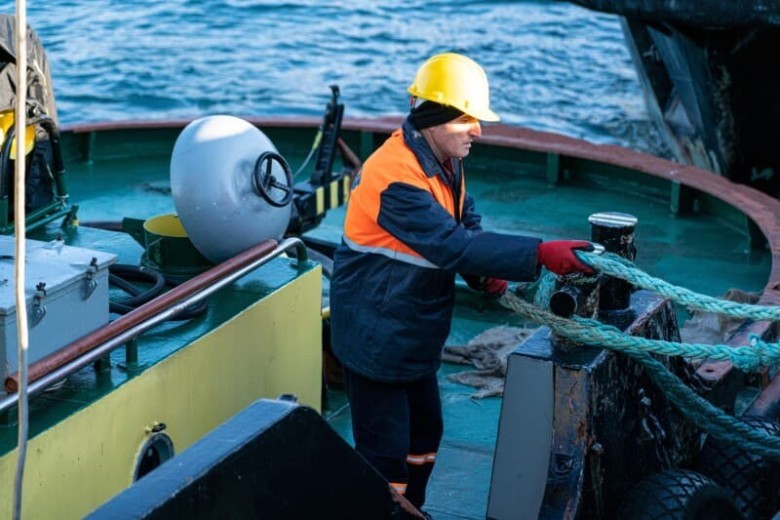
A sailor, his breath visible in the cold Arctic air, broke the silence with a pensive murmuring that expressed the collective hope that the mystery surrounding the bear's wishes could finally be solved. The feeling resonated and filled the space with a tangible sense of anticipation, similar to the lingering, enveloping fog that characterizes the polar regions. This moment of reflection, shared among those who knew the capricious nature of the sea, underscored the rare excitement of facing such a perplexing enigma as the behavior of their unexpected companion.
Arrival of the Experts
With the safe arrival of the Arctic Explorer, Dr. Morgan and her team, laden with specialized equipment, boarded the Amberjack. Their arrival marked the beginning of a collaborative effort to understand the mysterious behavior of the polar bear. Each piece of equipment they brought on board represented a potential key to unlocking the mystery, the anticipation of discovery palpable in the crisp Arctic air.

Armed with an arsenal of scientific tools – cameras to capture every nuance, binoculars to observe from a distance, and notebooks to chronicle observations – the experts disembarked the Amberjack with a sense of purpose. The crew, a gathering of seasoned sailors, watched with a mixture of curiosity and respect, recognizing the significance of the task ahead. This convergence of minds, prepared to delve into the puzzle presented by the polar bear, marked the beginning of an endeavor to bridge the gap between the known and the unknown, with each piece of equipment serving as a key to unraveling the bear's secrets.
First Encounter
As the scientists approached the edge of the ship, they were greeted by the sight of the polar bear, its movements restless against the backdrop of the icy landscape. The stark contrast of its white fur against the deep blue hues of the surrounding sea provided a visual reminder of the wild beauty of the Arctic and the singular focus of their mission – to understand the behavior of this majestic creature.

Observing in silence, the scientists absorbed every detail of the bear's behavior – its restlessness, the depth of emotion in its gaze, and the subtle cues offered by its body language. This attentive study was more than mere observation; it was an attempt to penetrate the veil of mystery surrounding the animal, to understand the source of its agitation. The intensity in the bear's eyes seemed to convey an urgent message, a silent plea that resonated with the observers and drove them to look closer, to understand deeper.
Fascinated Observers
From their vantage point, the team began their observations, with Dr. Morgan leading with binoculars in hand. Every movement of the bear was cataloged and analyzed, the eyes of the scientists trained to capture every nuance of its behavior. This initial phase of observation was crucial, laying the groundwork for hypotheses and further studies, their collective expertise focused on unraveling the mystery before them.

Dr. Morgan's gentle instruction to her team underscored the critical nature of their analysis. As they took notes, the actions of the bear – erratic yet seemingly intentional – were examined for underlying patterns or messages. This creature, whose behavior puzzled all who watched, seemed to be acting in a form of communication, its gestures and gazes filled with purpose. Yet the essence of what it was trying to convey remained shrouded in mystery, a puzzle that the team was determined to solve.
A Confusing Dance
The polar bear's repeated excursions into the water, followed by swift returns to the ice, captured the attention of the scientists, a behavioral pattern that seemed both deliberate and puzzling. This cycle of actions, unusual in its repetition, hinted at a deeper significance, prompting the team to ponder the motivations driving the bear's behavior and the potential messages it was trying to convey through these actions.
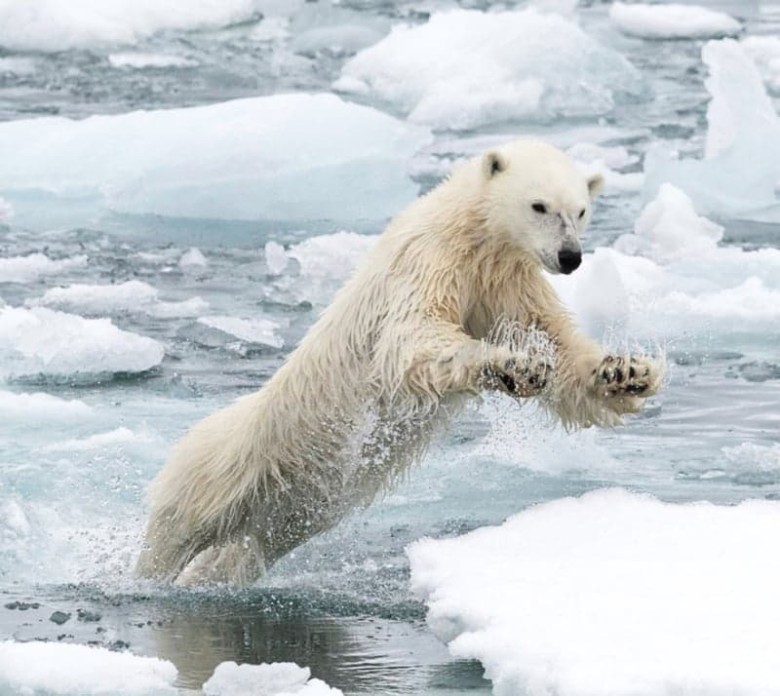
As the bear continued its inexplicable behavior, speculations arose among the scientists and the crew. The question of whether the bear was displaying signs of play, stress, or an entirely different motive captivated their attention. This collective wonder, ignited by the bear's actions, reflected the complexity of the task at hand – deciphering the intentions of a creature whose language was not spoken but rather shown through behavior that was as perplexing as it was fascinating.
Pointing towards the Unknown
Among the team's observations, the bear's consistent gestures towards a specific point on the horizon stood out. "He keeps looking there and pointing," noted one of the younger scientists, highlighting a behavior that seemed to indicate intentional focus or purpose. This repeated action, directed towards a distant point, suggested that the bear might be trying to communicate something crucial about its surroundings or needs.
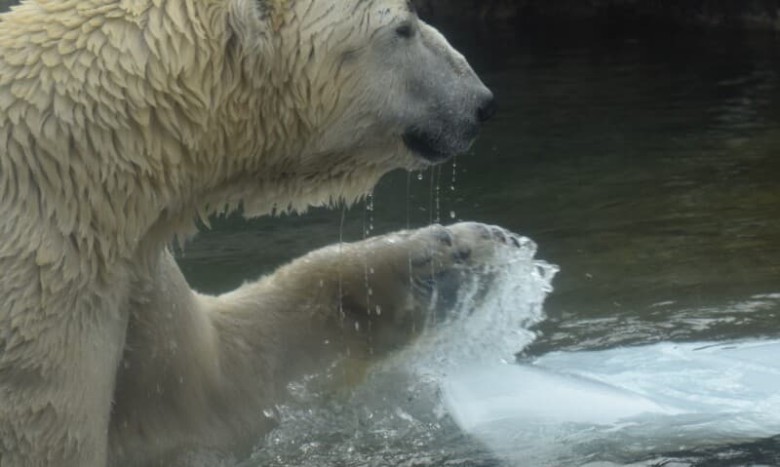
The bear's repeated actions, particularly its focused gestures towards a specific area of the icy landscape, sparked a spark of realization among the observers. Could it be that the bear was trying to guide them, indicating something of significance in the vast, frozen expanse? This line of thought, inspired by the bear's persistent behavior, led the team to consider that they might have been led to a discovery, a revelation that quietly awaited beneath the ice.
Analyzing Patterns
In deepening their analysis, the scientists scrutinized the bear's movements for patterns or clues that could shed light on its actions. "Pay attention to the frequency of his actions and the direction he looks each time," instructed Dr. Morgan, guiding her team to contemplate the possible meaning of these repeated behaviors. This meticulous examination aimed to uncover the underlying reasons for the bear's seemingly purposeful actions.

Under Dr. Morgan's watchful eyes, the team set out to document the bear's actions with meticulous care, their efforts focused on unraveling the intent behind its repeated movements. Every noted pattern, every analyzed gesture, was a piece of the larger puzzle they sought to solve. The hope was that within these documented patterns, a clearer understanding of the bear's motivations would emerge and shed light on the reasons behind its deliberate and puzzling behavior.
Seeking Clues in Behavior
Every aspect of the behavior of the polar bear was subjected to intense scrutiny, from the pitch and rhythm of its roars to the specific angles at which it gazed into the distance. The team engaged in lively discussions and debated the implications of its vocalizations, the focus of its attention, and the pace of its movements. This comprehensive analysis was a testament to their dedication to understanding the complexities of animal behavior in the Arctic context.

Contemplating the significance of every observed action, Dr. Morgan speculated that nothing the bear did happened without reason. Her speculation was met with rapt attention from the crew, hanging on her every word, captivated by the notion that the key to deciphering the bear's behavior lay in understanding the purpose behind each movement. This perspective, that every action of the bear was a clue to be interpreted, captivated everyone on board and fueled their drive to piece together the enigmatic behavior they were observing.
Mysterious Actions
Despite the team's concentrated efforts, the actions of the polar bear remained a puzzle, its repeated behavior a mystery that eluded a straightforward interpretation. The apparent pattern in its actions hinted at an underlying purpose or message, yet the key to unraveling this enigma seemed just out of their reach, a challenge that fueled their scientific curiosity even as it frustrated their immediate goals.

Despite their best efforts, Dr. Morgan and her team faced the frustrating reality that a crucial element of the puzzle remained elusive. The shared confusion, felt by both the crew and the scientists, underscored the complexity of the situation they were facing. United in their incomprehension, they stood on common ground, eager to uncover the truth behind the bear's persistent behavior, a mystery that continued to challenge their understanding and expectations.
The Story of a Mother
A breakthrough came when the scientists identified the polar bear as female, a detail that added a new dimension to their analysis. "This could be maternal behavior," speculated Dr. Morgan, considering the possibility that the bear's actions were influenced by her role as a mother. This insight shifted the focus of their investigation, suggesting that the motivations behind her behavior could be rooted in instincts related to the care and protection of her offspring.
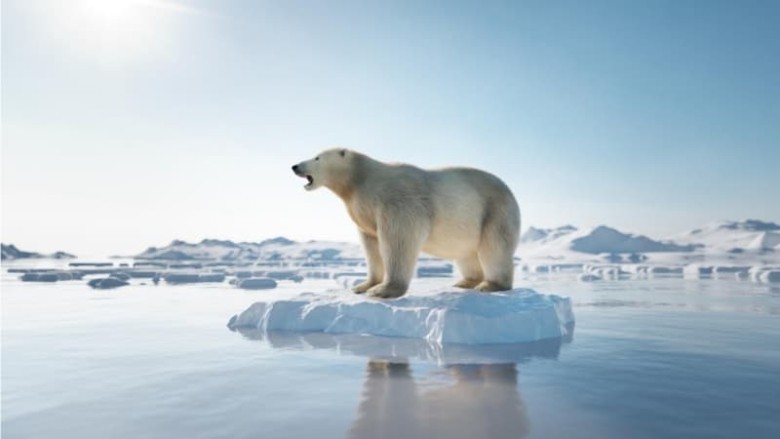
Dr. Morgan's suggestion, articulated as she adjusted her lens for a closer examination, introduced a new perspective into their analysis – the possibility that the bear's behavior was driven by maternal instincts. This insight added a profound layer to their understanding and indicated that the bear's motivations could be rooted in the deep, instinctual drive of a mother. The idea that they were witnessing behavior influenced by such powerful natural instincts opened new avenues of thought and enriched their interpretation of the bear's actions with the complexity of maternal behavior.
Speculation of Tragedy
The realization that the bear might be acting out of maternal distress introduced a poignant element into the situation. "Could she be in distress due to the loss of her cubs?" pondered one of the researchers, voicing a hypothesis that cast the bear's behavior in a tragic light. This consideration brought a serious tone to their deliberations as the team reflected on the profound impact of maternal instincts on animal behavior.

The hypothesis that the bear's unusual behavior could stem from maternal grief brought a somber tone to the team's deliberations. Viewing the bear's behavior through this empathetic lens, the scientists and the crew couldn't help but feel a sense of sadness for the creature and contemplate the profound influence that the loss of her cubs would have. This perspective altered the way they observed and imbued them with a deeper sense of compassion and a desire to understand the emotional turmoil that might be driving the bear's behavior.
Maternal Instincts
Surrounded by navigation charts and behavioral data, the team explored the potential influence of maternal instincts on the bear's actions. "If she is a mother, her actions could be protective or even a cry for help," suggested another scientist, deepening the analysis. This discussion aimed to contextualize the bear's behavior within the broader framework of animal psychology and environmental pressures, considering the protective nature of maternal behavior as a possible explanation.

The realization that they might be witnessing manifestations of a mother bear's instinctual drive to protect or locate her cubs added a rich layer of complexity to their ongoing analysis. This insight prompted a reassessment of the bear's actions, now viewed as possibly rooted in the powerful, instinctual behaviors of a mother. The team's efforts to decipher the bear's behavior were thus informed by this new understanding, casting the bear's actions in the light of desperation and maternal determination.
Deepening Mystery
While the identification of the bear as a mother provided a valuable perspective, the exact cause of her apparent distress remained unclear. The scientists' observations, now seen through the lens of potential maternal behavior, deepened their understanding, yet the definitive reason for her actions continued to elude a clear explanation. The team remained committed to observation, with each piece of data contributing to a gradually unfolding picture of the bear's life and challenges.

Faced with the bear's mysterious behavior, the challenge deepened before the team, pushing their expertise and understanding of polar bear behavior to its limits. The mystery shrouding the bear's actions seemed to grow with each observation, a puzzle cloaked in the icy expanse of the Arctic. This enduring enigma posed a formidable challenge and expanded the boundaries of what was known and understood about the natural behavior of these majestic creatures.
Speculation of Tragedy
The realization that the bear might be acting out of maternal distress introduced a poignant element into the situation. "Could she be in distress due to the loss of her cubs?" pondered one of the researchers, voicing a hypothesis that cast the bear's behavior in a tragic light. This consideration brought a serious tone to their deliberations as the team reflected on the profound impact of maternal instincts on animal behavior.

The hypothesis that the bear's unusual behavior could stem from maternal grief brought a somber tone to the team's deliberations. Viewing the bear's behavior through this empathetic lens, the scientists and the crew couldn't help but feel a sense of sadness for the creature and consider the profound influence that the loss of her cubs would have. This perspective altered the way they observed and imbued them with a deeper sense of compassion and a desire to understand the emotional turmoil that might be driving the bear's behavior.
Maternal Instincts
Surrounded by navigation charts and behavioral data, the team explored the potential influence of maternal instincts on the bear's actions. "If she is a mother, her actions could be protective or even a cry for help," suggested another scientist, deepening the analysis. This discussion aimed to contextualize the bear's behavior within the broader framework of animal psychology and environmental pressures, considering the protective nature of maternal behavior as a possible explanation.
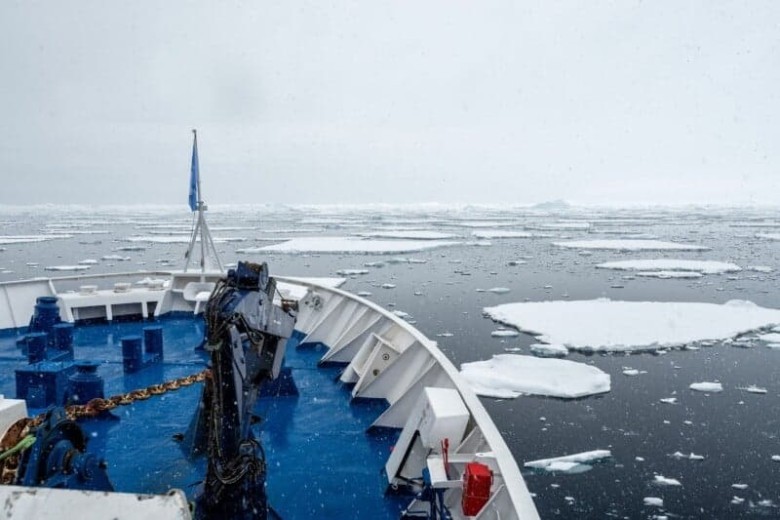
The realization that they might be observing manifestations of a mother bear's instinctual drive to protect or reunite with her cubs added a rich layer of complexity to their ongoing analysis. This insight prompted a reassessment of the bear's actions, now being viewed as possibly rooted in the powerful, instinctual behaviors of a mother. The team's efforts to decipher the bear's behavior were thus informed by this new understanding, presenting the bear's actions in the light of desperation and maternal determination.
Deepening Mystery
While identifying the bear as a mother offered a valuable perspective, the exact cause of her apparent distress remained unclear. The scientists' observations, now viewed through the lens of potential maternal behavior, deepened their understanding, yet the definitive reason for her actions continued to elude a clear explanation. The team remained committed to observation, with each piece of data contributing to a gradually unfolding picture of the bear's life and challenges.
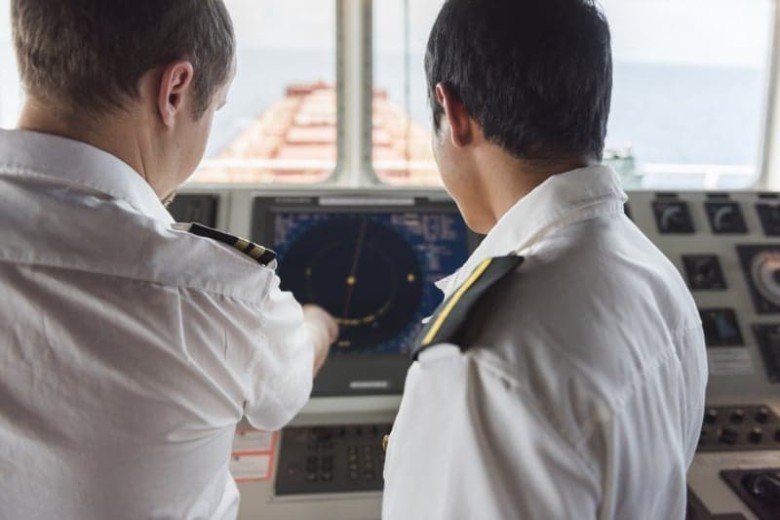
Faced with the bear's mysterious behavior, the challenge deepened before the team, testing their expertise and understanding of polar bear behavior to its limits. The mystery shrouding the bear's actions seemed to grow with each observation, a puzzle enveloped in the icy vastness of the Arctic. This enduring enigma posed a formidable challenge and expanded the boundaries of what was known and understood about the natural behavior of these majestic creatures.
A New Course
Captain Reynolds, influenced by the insights of the scientific team, made a strategic decision to follow the bear's lead. "Let's follow her direction," he decided, adjusting the ship's course with a mix of determination and hope. This decision marked a turning point, a commitment to explore the potential significance of the bear's gestures and the areas to which she seemed to be directing their attention.

Guided by the bear's persistent cues, Captain Reynolds made the decision to change the course of the Amberjack and steer the ship in the direction implied by the bear. This adjustment to their journey, motivated by the hope of uncovering the mystery ahead of them, marked a crucial moment in their expedition. The path they now followed, drawn by the silent yet compelling guidance of the polar bear, symbolized a departure from the familiar and ventured into the unknown in search of answers hidden beneath the icy shell of the Arctic.
Navigating Uncertainty
Under Reynolds' determined leadership, the Amberjack set a course towards the horizon indicated by the bear, venturing into the unknown. The journey was fraught with uncertainties; each mile traveled took them deeper into the heart of Arctic mysteries. This shared pursuit, a blend of scientific inquiry and navigational skill, underscored the collective commitment of the crew and scientists to understand the enigmatic behavior of the polar bear and the secrets it could reveal about the natural world.
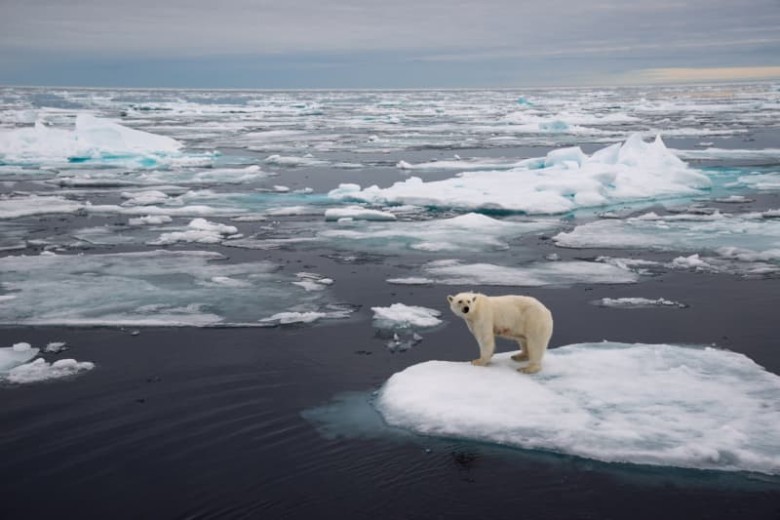
As the Amberjack adjusted its course, crew members exchanged silent glances, carrying a mix of concern and awe within them. The unspoken question hovering among them – what could they discover on this new, uncharted course? – reflected the depth of their interest and the uncertainty of their quest. Guided by the bear's cryptic guidance, they were now navigating not only the physical landscape of the Arctic but also the intangible terrain of mystery and discovery.
Trusting Instincts
The crew's journey into the unknown was driven by a shared curiosity and a growing faith in the intentions of the polar bear. "She's trying to show us something," mused a sailor, his gaze fixed on the distant horizon, embodying a mix of wonder and hopeful anticipation. This sentiment resonated among the crew, a shared belief that they were being led towards a discovery beyond their understanding.

This unconventional decision to follow the lead of a wild animal into the unknown was a departure from the norm for the experienced seafarers aboard the Amberjack. Yet, faced with the bear's persistent signals, it felt like the only viable path, a leap of faith into uncharted waters. The crew's readiness to embrace this unorthodox path was a testament to their openness to the possibilities lying beyond the realm of their maritime experience, driven by a collective desire to unveil the truth behind the bear's mysterious behavior.
An Unknown Journey
Navigating through icy waters, the Amberjack ventured into areas characterized by their untouched and pristine nature. The sea here felt different, its secrets shrouded in silence and the unknown. Guided by the silent yet persistent leadership of the bear, the ship moved forward with a sense of purpose, each wave bringing them closer to whatever mystery lay within the ice.

Captain Reynolds, ever vigilant, kept a close eye on the unfolding path, aware of the dual nature of their journey. They were navigating through the icy waters of the Arctic, yes, but they were also traversing a landscape of questions and puzzles presented by nature. This journey, guided by the silent yet persistent call of the polar bear, was more than just a physical voyage; it was an odyssey into the heart of a mystery laid out by nature itself, challenging them to unravel its secrets.
A Guiding Force
With unwavering determination, the polar bear continued forging ahead, her deliberate actions serving as a beacon for the crew. There was unanimity among the onlookers: her behavior was not random but purposeful, indicating a destination or location of significance. Her endurance reinforced the crew's belief in the importance of their mission and bound them to her silent quest.

During their pursuit, the bear would occasionally cast glances back at the ship, his actions suggesting that it was important for them to keep following. His presence against the vast, desolate backdrop of the Arctic was commanding, a silent guardian leading them deeper into the unknown. These moments of silent communication, fleeting yet profound, underscored the enigmatic connection that had formed between the human observers and the wild being guiding them, a connection forged in the pursuit of understanding the mysteries of nature.
Heart-wrenching Hypothesis
The dark possibility that the bear's cubs might no longer be alive was quietly voiced among the team, casting a shadow of sadness over their expedition. "What if their cubs have perished?" pondered a scientist, the weight of such a loss reflected in the solemn tone of his voice. This heart-wrenching hypothesis added a layer of urgency and emotional depth to their journey, propelling them forward with a renewed sense of purpose.
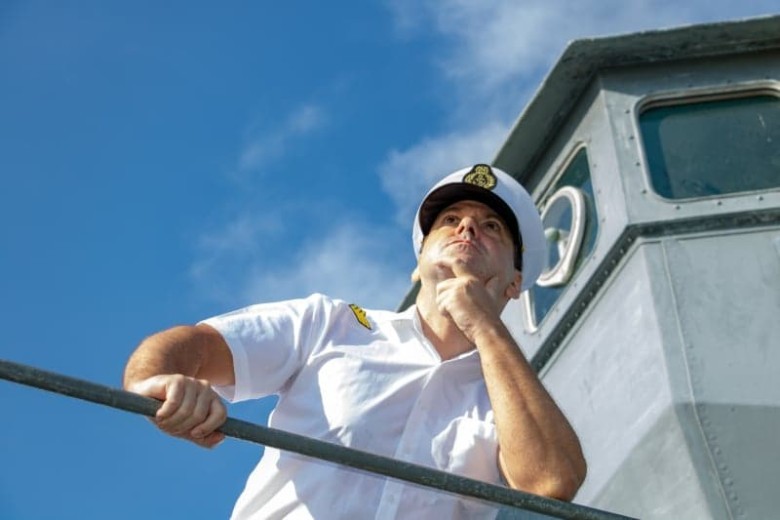
Contemplating a scenario where the bear had suffered the loss of his cubs cast a gloomy shadow over the hearts of those aboard the Amberjack. The profound impact of such a loss on the bear, viewed through the prism of maternal instinct and grief, lent a somber tone to their mission. This dark possibility added a layer of urgency and depth to their quest, underscoring the stakes that lay not just in unraveling the mystery of the bear's behavior but also in understanding the emotional and psychological burden such a loss would mean for a mother bear in the wild.
Signs of Restlessness
As they approached the area that seemed to be of particular interest to the bear, her restlessness escalated. Her pace quickened, her roaring grew louder and more frequent, indicating a shift in her behavior signaling that they were nearing something of great significance. This change in behavior was a clear indicator to the observers on the Amberjack that a pivotal moment was approaching.

As the Amberjack sliced through the icy waters, the crew noticed a distinct shift in the polar bear's behavior. His restlessness increased, a clear signal to the onlookers that they were nearing a place of crucial importance. This was not aimless wandering; it was a deliberate journey to a location of considerable significance for the bear, a realization that ignited a wave of curiosity and heightened vigilance in everyone on board.
A Change in Behavior
The crew noticed a clear shift in the polar bear's behavior as they approached a specific location. Her movements became more purposeful, her attention more focused, indicating that they were on the brink of discovering what they had been led to. This noticeable change in behavior heightened the air of anticipation that had enveloped the ship.

The transformation in the bear's behavior was unmistakable, permeating the air with a sense of urgency. It was as if the bear, through its actions, was desperately trying to convey a message, leading them to an understanding or discovery crucial for its survival. This shift towards purposeful behavior captivated both the crew and scientists, underscoring the gravity of their expedition and the potential significance of their goal.
Closer to Answers
Guided by the persistent behavior of the polar bear, the crew felt a growing conviction that they were on the verge of a significant discovery. This sense of imminent revelation was palpable, a shared anticipation that what lay ahead could offer answers to the many questions that had arisen during their journey.

An expectant silence fell over the Amberjack as it ventured deeper into the heart of the Arctic, each forward meter thick with anticipation. The crew and accompanying scientists shared a tangible sense of excitement, a collective belief that they were getting closer to unraveling the mystery that had guided their journey thus far. This atmosphere of subdued excitement bore witness to the shared human desire for exploration and understanding, magnified by the stark, unforgiving beauty of their surroundings.
Heightened Vigilance
An electrifying sense of anticipation filled the air aboard the Amberjack as they neared their destination. Every crew member and scientist was vigilant, their eyes on the horizon, collectively holding their breath in anticipation. The atmosphere was one of tense excitement, a silent acknowledgment that they were on the cusp of something meaningful.
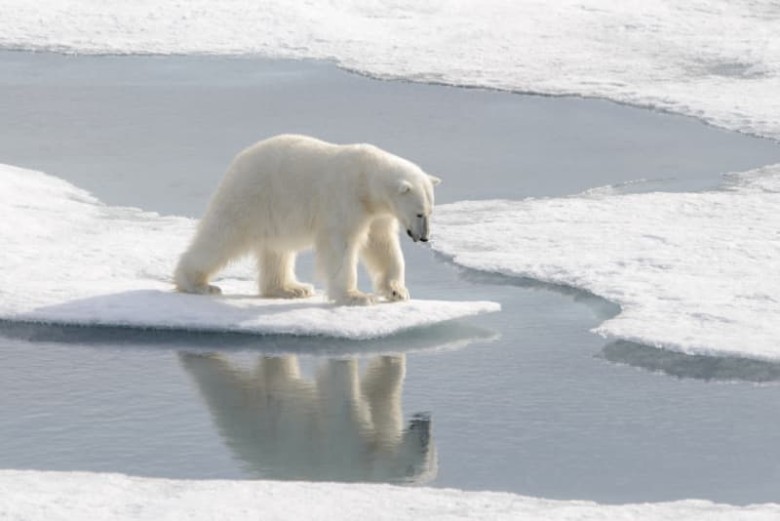
The anticipation aboard the Amberjack reached its peak, with each crew member and scientist on the edge of revelation. The feeling that they were on the brink of understanding the bear's persistent signals charged the air, a collective belief that they were about to cross the threshold to understanding. This collective readiness for discovery underscored the unique nature of the expedition, blending scientific inquiry with the raw instinct of nature.
An Imminent Discovery
The heightened urgency and deliberate actions of the polar bear seemed to signal that their goal was near. Her behavior conveyed a sense of impatience and desperation, as if urging the crew to quicken their pace. This growing intensity hinted that what they were nearing was of great significance, both for the bear and possibly for understanding her actions.

As they followed the bear's lead, a collective sense of purpose united the crew and scientists, all poised for what lay ahead. The conviction of being on the brink of a significant discovery was tangible, electrifying the atmosphere with a mix of anticipation and determination. This shared resolve to uncover the truth behind the bear's actions highlighted the unique collaboration between human curiosity and animal instinct, propelling them forward into the unknown.
Assembling the Puzzle
Inside the cabins of the Amberjack, a hive of activity buzzed as the team went through maps and data, correlating the bear's behavior with their geographic position. Dr. Morgan led the coordination effort, her expertise guiding the synthesis of observation and tracking. This meticulous compilation of information was crucial, laying the foundation for understanding the context of their journey and the leadership role of the bear.

Contributions from both the crew and the scientific team enriched the expedition, transforming individual observations into pieces of a larger puzzle. This collective effort to piece together the story behind the actions of the polar bear demonstrated the power of collective insight, drawing from a plethora of experiences and expertise. Together, they constructed a narrative promising to shed light on the present mystery, with each piece of information adding depth and clarity to their understanding.
Gazes and Gestures
On deck, the team's attention was drawn to the consistent gestures of the bear towards a distant point in the icy landscape. "It keeps looking over there and pointing," noted an attentive scientist, highlighting a behavior that seemed to indicate a specific interest or concern. This repeated action suggested intentional communication, directing their focus towards an unseen significance on the horizon.

The focused intensity of the bear's actions, especially her directed gaze and deliberate movements, sparked realization among the observers. "It's as if it wants to show us something specific," mused one of the scientists, articulating the growing suspicion that the bear's journey was not random but a guided attempt to draw their attention to a specific point in the icy expanse. This insight marked a turning point in their journey as the team began to view the bear's actions through the lens of purposeful communication.
Beyond the Usual Territory
The direction indicated by the bear led the crew and scientists to areas far from typical polar bear habitats. This deviation from familiar territories stirred curiosity and speculation about the reasons for such an unusual path. The significance of this detour, away from the familiar areas of polar bear activity, became the subject of discussions and fascination.

Captain Reynolds, faced with the unfamiliar terrain that the bear seemed determined to lead them through, pondered the motives behind their unexpected detour. "Why is she leading us here?" he wondered, the unfamiliarity of their surroundings adding layers of intrigue and complexity to their mission. This journey into uncharted territories not only tested their navigation skills but also deepened the mystery surrounding the bear's intentions, suggesting that the answers they sought lay beyond the realm of ordinary behavior.
A Unified Effort
A sense of camaraderie and collective endeavor permeated the Amberjack as crew members and scientists worked closely together. Ideas were exchanged, theories discussed, and observations shared in a dynamic interplay of knowledge and speculation. This unity of purpose underscored the collaborative nature of the expedition, with each participant contributing to the unfolding story.

The collective effort to decipher the clues given by the actions of the polar bear brought together the diverse expertise of sailors and scientists on board the Amberjack. Each observation and theory added to a growing body of knowledge, a testament to the power of collaboration in the face of the unknown. This unity of purpose, driven by the common goal of unraveling the puzzle presented by the bear, underscored the interdisciplinary nature of the expedition, blending seafaring resilience with scientific inquiry.
On the Edge of Understanding
As the journey continued, guided by the clues of the polar bear, a palpable sense of anticipation built within the team. The closer they got to their unknown destination, the greater the excitement grew, driven by the belief that they were on the brink of discovering something truly significant. This shared feeling of being on the cusp of a discovery motivated both the crew and scientists alike, propelling them forward with a sense of purpose and hope.
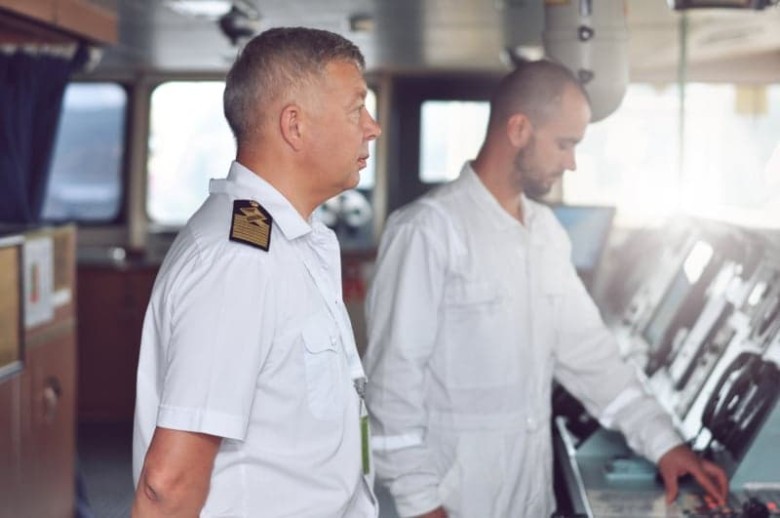
Each deliberate gesture and focused gaze of the bear seemed to bring the team closer to the heart of the mystery. Excitement and curiosity permeated the air, intensifying with each puzzle piece falling into place. This collective anticipation, fueled by the gradual alignment of observations and theories, underscored the transformative potential of the expedition, a journey from confusion to clarity guided by the silent pleas of a lone polar bear.
Insight from a Climatologist
Midst their contemplations, an insightful observation from the onboard climatologist shed new light on the situation. "Recent ice drift patterns could explain this," he proposed, offering a possible explanation for the bear's behavior. This insight prompted the team to consider environmental factors as key components in understanding the bear's actions and the broader context of their expedition.
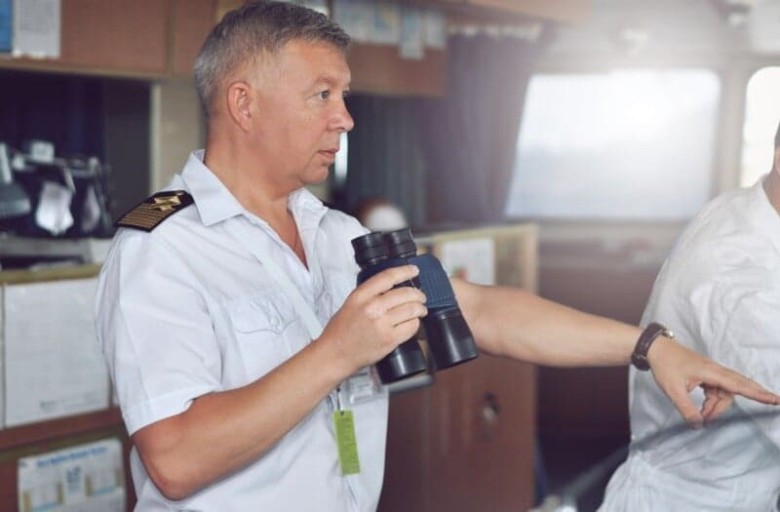
The prevailing theory among the team was heartbreakingly clear: the bear's cubs were stranded on a drifting ice floe, separated from their mother and the safety of the main pack. This hypothesis injected a new urgency into their mission and cast the bear's behavior in a desperate light. The realization that they might be racing against time to reunite a mother with her cubs added a poignant layer to their journey, transforming their scientific expedition into a rescue mission.
A Mother's Desperation
The hypothesis that the urgency of the bear could be rooted in a maternal instinct to protect her cubs, possibly stranded on a drifting ice floe, brought a new understanding to her behavior. This scenario, in line with the known protective nature of polar bear mothers, provided a plausible explanation for the desperation and persistence of her actions, framing her journey as one driven by instinct, a search for reunification with her offspring.
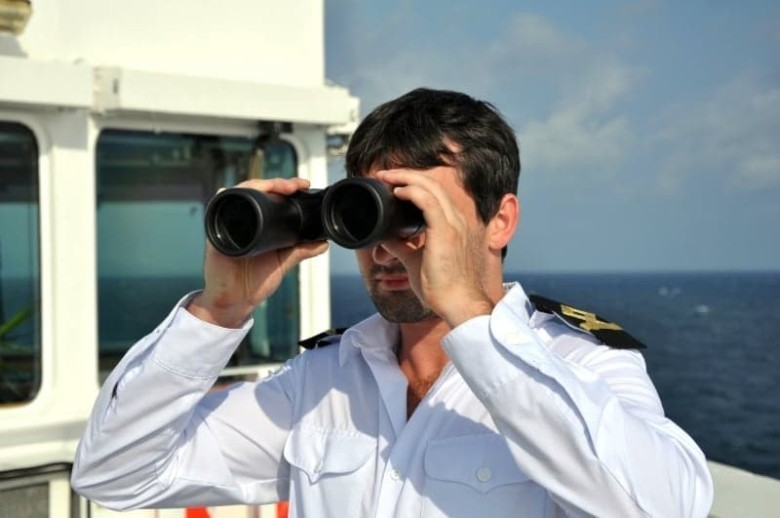
"She's seeking help," concluded Dr. Morgan, a revelation that resonated deeply with all present. The notion that a wild animal, driven by maternal instinct, would turn to humans in a moment of crisis was both astonishing and humbling. This understanding bridged the gap between species, highlighting the universal nature of parental love and the lengths to which a mother will go to protect her young.
Approaching the Truth
As the Amberjack neared the location indicated by the bear, a sense of electric anticipation enveloped the ship. Both the crew and scientists leaned into their vantage points, their eyes scanning the horizon for any sign of what lay ahead of them. This moment, charged with the potential for revelation, marked the climax of their shared journey, a point where speculation and observation converged on the edge of understanding.

The anticipation of uncovering the truth behind the bear's actions, coupled with the possibility of aiding in a rescue, injected the crew and scientists with a renewed sense of purpose and urgency. The realization that they were on the verge of not only solving a mystery but potentially saving lives electrified the team, focusing their efforts and sharpening their resolve. This shift in the dynamics of the expedition, from observation to action, marked a turning point in their arctic adventure.
A Glimmer of Hope
The sudden cry from the lookout, "Movement on the ice ahead!", cut through the tense silence and drew all eyes to the indicated point. Through their binoculars, the distant form of an ice floe became visible, a point in the vast white expanse that promised answers to the questions that had driven them forward.
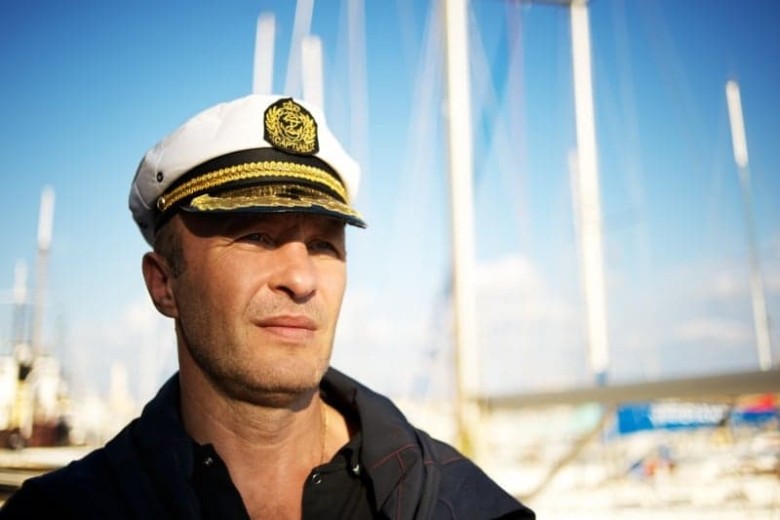
As movement on the distant ice floe was sighted, the collective held their breath. The subtle yet unmistakable signs of life sparked a wave of hope among the onlookers, the possibility that these small forms were indeed the bear cubs brought a tangible sense of urgency to their mission. This moment of discovery, though tense, reinforced the significance of their journey, lending credibility to their theories and fueling their determination to act.
The Discovery of Cubs
As the team trained their binoculars on the distant ice, a wave of relief and wonder washed over them at the sight of the polar bear cubs. This discovery, heartwarming and validating, confirmed the maternal motivation behind the bear's actions and provided a poignant explanation for the journey they had all undertaken.

The sighting of the cubs, seemingly stranded and affirming the climatologist's theory on ice drift, brought a mix of relief and urgency to the expedition. This validation of their speculations about the mother bear's motives transformed their theoretical understanding into a concrete objective. The realization that the bear had indeed been leading them to its cubs all along provided a moment of clarity and confirmation, underscoring the critical nature of their mission and the immediacy with which they needed to act.
Swift Response
With the discovery of the cubs, an immediate sense of urgency was instilled in the crew and scientists to come together to devise a strategy for their rescue. The realization that every moment was critical infused their efforts with a newfound intensity and spurred the team to act swiftly and decisively to ensure the safety of the bear offspring.

A rapid exchange of ideas and coordinated planning followed, with Dr. Morgan at the forefront emphasizing the need for a delicate yet swift rescue operation. The communal spirit of the moment, melding the technical skills of the crew with the scientific insights of the researchers, underscored the adaptability and determination of the expedition. This concerted effort to develop a rescue strategy highlighted the team's dedication to leverage their collective expertise in service of a noble cause and reflected the depth of their commitment to the mission at hand.
Mother and Raft
Captain Reynolds, quickly adapting to the situation, suggested using the raft that had originally facilitated the bear's boarding. This plan would not only aid in the rescue of the cubs but also allow their mother to remain close by, thereby reducing the potential stress of the operation. This thoughtful approach underscored the captain's commitment to the welfare of the animals and the success of the mission.
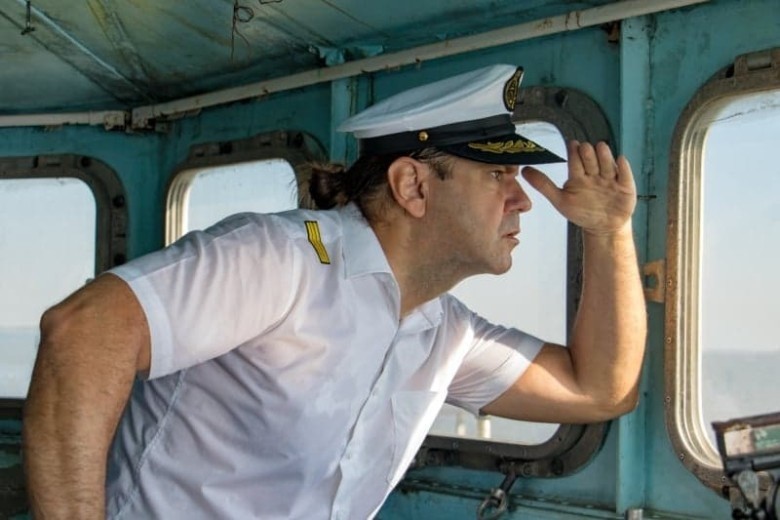
With the strategically positioned raft, the mother bear seemed to understand the plan and positioned herself in anticipation of her cubs' rescue. Her gaze, fixed on the distant ice where her cubs awaited, was a poignant blend of hope and fear, a silent testament to the bond between mother and offspring. This moment of silent cooperation between humans and animals underscored the unique connection forged through their shared goal, a partnership defined by mutual trust and a shared sense of urgency.
A Delicate Maneuver
The coordinated effort between the Amberjack and the Arctic Explorer embodied teamwork and precision as both ships carefully navigated through the treacherous icy waters towards the cubs. The delicate balance of getting close enough for the rescue without further destabilizing the ice floe tested the skills and determination of all involved, highlighting the complexity of the operation.

Precision and care shaped the efforts of the crew and scientists as they worked to safely retrieve the cubs, their actions guided by the gravity of the situation and the watchful eyes of the mother bear. Balancing the technical challenges of the rescue with the emotional weight of the moment, this delicate operation showcased the team's ability to respond to the demands of the mission with compassion and expertise, a testament to their collective commitment to saving the stranded cubs.
Safe Recovery
The rescue team's deployment was a study in caution and expertise as they navigated the ice with gentle precision to reach the stranded cubs. Every move was calculated, a reflection of the team's dedication to the safe recovery of the bear offspring and underscored the humanitarian spirit guiding their actions.

The successful recovery of the cubs, unharmed and now securely aboard the raft, was met with a mix of relief and joy. The mother bear's reaction, a sound bridging the gap between a triumphant roar and a sigh of relief, resonated deeply with all present. This moment of reunion, marked by the mother's gentle inspection of her cubs, was a powerful reminder of the impact of the expedition, a successful intervention that went beyond scientific inquiry to touch the lives of the creatures at their core.










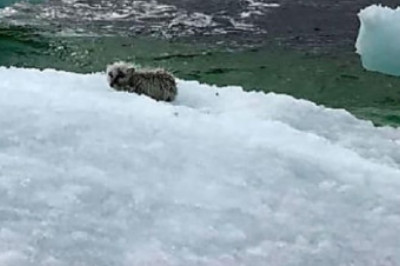

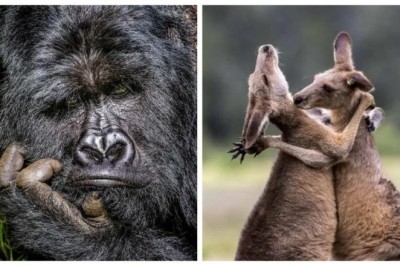

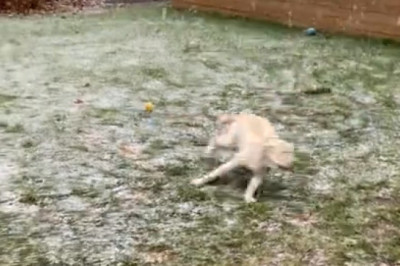
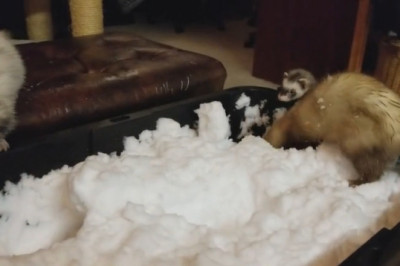

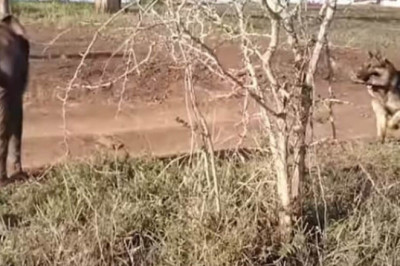

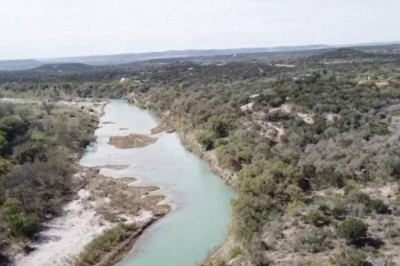
Comments
0 comment